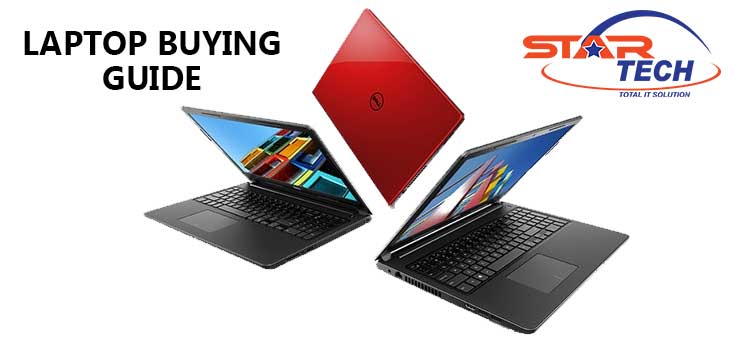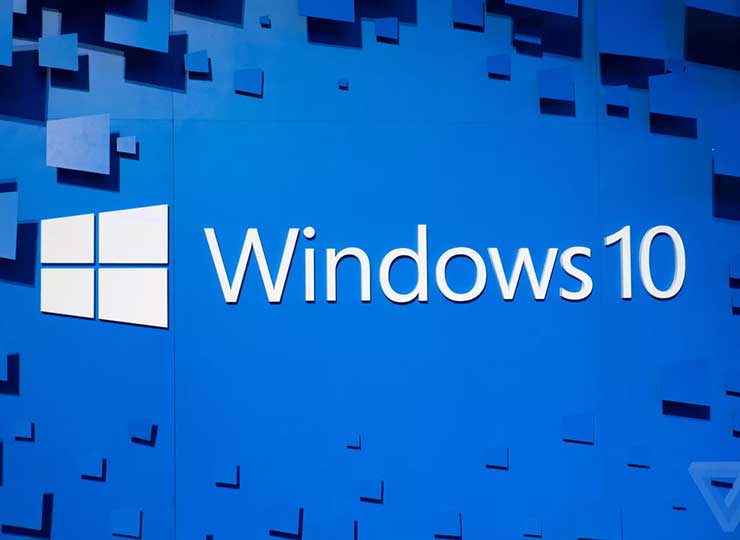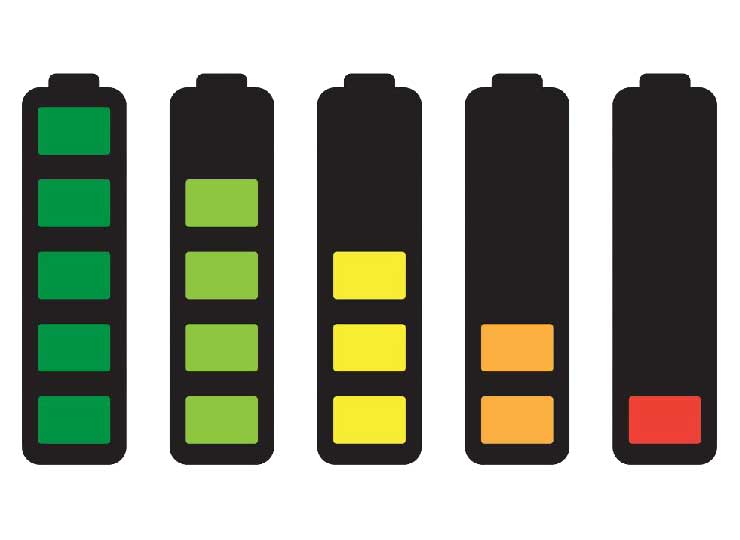In 2017, choosing a laptop to purchase is very challenging. There’s a wide variety of sizes, features, and prices, which makes choosing the right laptop a challenge. That’s why you need to figure out what your needs are. What are you looking for?
Choosing the correct laptop can be a complicated process, given the many differences in terms of both design and hardware is unique to each brand. When buying a laptop, keep in mind what exactly you will be using your laptop for, whether you intend to carry it from place to place or simply use it as a device to cuddle up with in bed. There is a good deal to consider, so let’s guide you through the process.
How will you use your laptop?
Light use: Surfing the Web, paying bills online, e-mail and social networking, organizing and sharing digital photos
Average use: Storing and streaming music and movies, tasks like spreadsheet and document creation
Expert level use: Multitasking with multiple tabs and programs, advanced level graphics and photo editing, and video production
More expert level users will want to invest a bit more in a higher resolution screen, a faster processor, more system memory, and a larger hard drive.
How important is portability to you?
The screen size of a laptop, the type and capacity of built-in storage devices inside a laptop, and the presence or lack of a CD/DVD or Blu-ray drive all affect a laptop’s size and weight. Laptops generally fall into three categories of weight:
3 lbs. or less: These laptops are great for students and travelers who need to perform basic e-mailing and Web surfing tasks.
4–5 lbs.: This midrange selection provides a balance between power and portability, great for users who occasionally work from coffee shops or airports.
6 lbs. or more: These workhorses provide powerful processing and larger screens, ideal for gamers and video editing professionals who rarely use their laptops away from their desks.
Size, does it matter to you?
Before you look at specs or pricing of a laptop, you need to figure out just how portable you need your laptop to be. Laptops are usually categorized by their display sizes:
11 to 12 inches: The thinnest and lightest systems around have 11-to 12-inch screens
13 to 14 inches: Provides the best balance of portability and usability.
15 inches: The most popular size, 15-inch laptops. Consider this size if you want a larger screen and you’re not planning to carry your notebook around often.
17 to 18 inches: If your laptop stays on your desk all day every day, a 17-or 18-inch system could provide you with the kind of processing power you need to play high-end games or do workstation-level productivity like a photo or video editing.
Operating System, which one?
The operating system is one of the main aspects of your laptop. It manages all software and hardware, including files, memory and connected devices. There are three popular operating systems in the market right now, and they are as follows:
Windows 10
Microsoft Windows is designed specifically around an intuitive touch-screen interface. (though it can be used with a traditional mouse and keyboard) It also features a new task manager, streamlined file management and a suite of built-in apps. Windows 10, the latest version of Microsoft’s flagship operating system, provides a number of improvements over Windows 7 and 8, including the ability to switch between tablet and desktop modes, a revamped Start menu with live tiles and the powerful Cortana digital assistant.
OS X
Apple Inc. owns the operating system, for its own line of laptops known as MacBooks. All MacBooks come with Apple’s latest desktop operating system, macOS Sierra. OS X shows off an elegant and easy-to-use interface to complement Macs’ sleek aesthetics and impressive battery life. Overall, the operating system offers similar functionality to Windows 10, but with a different take on the interface that substitutes an apps dock at the bottom of the screen for Microsoft’s Start menu and taskbar.
Chrome OS
Featured exclusively in the Chromebook line of mobile computers, this OS runs custom apps and cloud-based programs rather than traditional software. It’s great for surfing the Web, keeping up with your e-mail and social networks, and sharing your photos with friends and family, rather than more data-intensive tasks like video editing and hardcore gaming.
Tech Specs, What to Choose?
Technical Specifications are a vital part of a laptop. Choosing which ones fit right for you is also a challenge. Components such as a processor, hard drive, RAM and graphic chips play a role in this part.
Here are the main components to keep an eye on:
CPU: The “brains” of your laptop, the processor has a huge influence on performance, but depending on what you want to do, even the least-expensive model may be good enough for you. Here is what’s available to you in the market right now:
Intel Core i5: If you’re looking for a mainstream laptop with the best combination of price and performance, get one with an Intel Core i5 CPU. Models that end in U (ex: Core i5-7200U) are the most common. Those with the Y in the name are low power and have worse performance while models with an HQ offer four cores. Intel’s latest-generation, “Kaby Lake” CPUs have model numbers that begin with 7 (ex: Core i5-7300U) so look for those to get the best performance.
Intel Core i7: High-end performance for gaming rigs and workstations. Models with numbers that end in HQ or K use higher wattage and have four cores, allowing for even faster gaming and productivity. Also, there are Core i7 Y-series chips that have lower power and performance. Keep an eye out for CPUs that have a 7 in the model number (ex: Core i7-7820HQ) because they are part of Intel’s latest, 7th Generation Core Series, and offer better performance.
Intel Core i3: Performance is just a step below Core i5 and so is the price. If you can possibly step up to a Core i5, we recommend it.
AMD A, FX or E Series: Found on low-cost laptops, AMD’s processors, the company calls them APUs rather than CPUs — provide decent performance for the money that’s good enough for web surfing, media viewing, and productivity.
Intel Xeon: Extremely powerful and expensive processors for large mobile workstations. If you do professional-grade engineering, 3D modeling or video editing, you might want a Xeon, but you won’t get good battery life or a light laptop.
Storage Drives (Hard Drives): Inside a laptop, a hard disk is even more important than the CPU, as it functions as the storage device for all your data. If you can afford it and don’t need a ton of internal storage, get a laptop with a solid state drive (SSD) rather than a hard drive, because you’ll see at least 3x the speed and a much faster laptop overall.Among SSDs, the newer PCIe x4 (aka NVME) units offer triple the speed of traditional SATA drives.
RAM: Random-access memory (RAM), is important because it helps your processor take care of multiple tasks at once. A minimum of 2GB is required for regular computing usage like checking emails, chatting with friends, etc, but 6GB or more is recommended if you’re into graphics and advanced photo or video editing. Most laptops have 4GB–8GB pre-installed, and some have up to 32GB. If you think you might need more memory later, choose a model that lets you expand the RAM.
Graphics Chips: If you’re not playing PC games, creating 3D objects or doing high-res video editing, an integrated graphics chip (one that shares system memory) will be fine. If you have any of the above needs, though, a discrete graphics processor from AMD or Nvidia is essential. Just like with CPUs, Graphic cards have both high- and low-end chips.
Battery Life Essential to you, or not?
Having tons of specs, and being the best laptop in 2017 does not count, unless the battery life is also at top notch. Laptops being highly portable also needs to be able to give you battery life for a longer period of time. If it is a high-end performance laptop, which uses more power, they are likely to have less battery life, than their counterparts. Apples Inc, MacBook laptops in 2017 gives you the most of your battery. While being in high-end performance level, they still provide users with a longer battery life, than most other brands of laptops.













Comments
There are no comments for this Article.